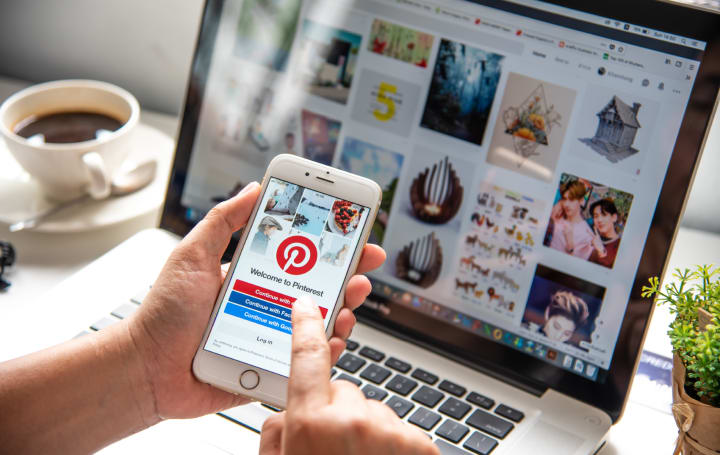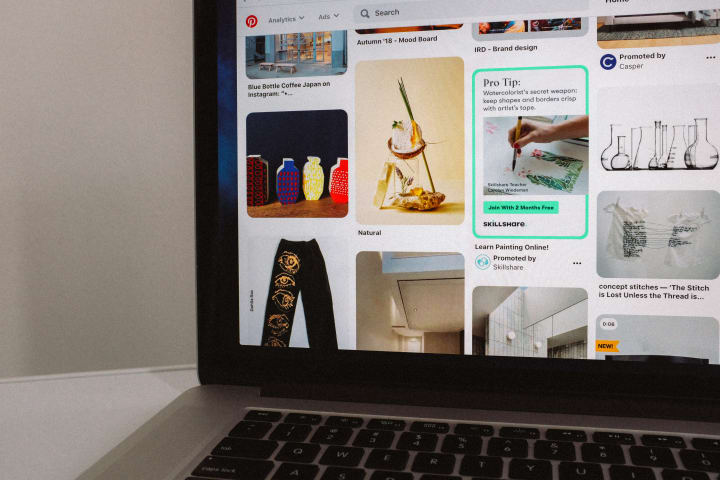Everything You Need To Know About Pinterest Ads
Learn why advertising on Pinterest could be the thing that takes your online business to the next level.

Pinterest offers one of the most robust advertising platforms for online businesses. If even a portion of your target audience hangs out on Pinterest, Promoted Pins are worth considering as part of your marketing strategy.
But Pinterest ads are not widely known or understood by small businesses. And that’s actually for a great reason: Sponsored Pins seamlessly blend in with other content on Pinterest. You often don’t even know you’re looking at paid content because it integrates so well with user-generated Pins.
In fact, Pinterest offers one of the only advertisements that customers want to see. Pinterest reported that 78% of its users (Pinners) believe that sponsored brand content makes Pinterest more useful. Imagine—having customers who actually want to see your ads!
So what do you need to know about Pinterest ads to see if it’s right for your business?

1. Sponsored Pins Show Up in Relevant Searches and Home Pages
Almost all social media offers advertising embedded within other content. In our opinion, Pinterest is one of the strongest at seamlessly integrating advertising with user-generated content.
Sponsored Pins are part of the regular Pinning experience. A user can search a topic that interests them or go to their homepage, where they’re presented with relevant Pins based on the boards they already follow. During this browsing process, Sponsored Pins show up and appear almost identical to non-sponsored ones.
But this doesn’t mean that Sponsored Pins are “useless” for businesses. It just means that the advertising is subtler. And this subtlety goes over well with consumers. They don’t feel like Sponsored Pins are invading their experience with Pinterest because they’re on Pinterest to browse, get ideas, and shop. If they’re searching for something, an ad related to what they’re searching for doesn’t seem very intrusive. This differs from Facebook, where ads are becoming highly invasive (like in the middle of videos or as unwanted Sponsored posts on their News Feeds.)
Moreover, this form of promotion helps increase brand visibility. Because the Pins are showing up naturally in relevant searches, this allows for greater brand reach and awareness. Compare this to Instagram, where it’s much harder for brands to reach new customers through their typical browsing experience.
2. There are Different Forms of Pinterest Advertising
One of our favorite parts of Pinterest ads is that you can customize your campaign based on how you want to interact with your customers. The three main types of advertisements on Pinterest are Promoted Pins, Promoted Video, and Promoted Apps.
Promoted Pins let you “sponsor” a pin that you’ve created. Businesses, smaller ones in particular, usually use these if they’re looking to feature something special like an event, promotion, or piece of content—especially if they’re new to Pinterest advertising. With Promoted Pins, you can target specific demographics, locations, customers, and campaigns.
Promoted Videos are a great way to show off ideas, lifestyle, and products. Pinterest only allows the highest-quality videos from brands; in fact, only business accounts can create videos. Such restrictions set a higher standard than other platforms, where every user can create photos and videos.
Promoted App Pins allow users to discover and download phone applications directly from Pinterest. This is highly effective if you have an app that connects to your e-commerce store.
Learn more about the different ad formats on Pinterest here.

3. Pinterest Campaigns are Objective-Based
Pinterest’s advertising metrics are easy to track. On your Pinterest Ads Manager dashboard, Pinterest will automatically calculate total impressions, total engagements, total conversions, and marketing spend.
You can even create different ad campaigns based on your primary marketing objective. Pinterest can help you set up your promotion based on your goals, like boosting awareness, engagement, or traffic.
If you’ve been struggling to track your marketing metrics, Pinterest makes it easy for you. You’ll see your ROI updated in real-time so you can pivot and grow accordingly.
4. You Can Target Based on Demographics and Interests
Like other social media sites, Pinterest allows you to target your advertisements based on several demographic factors like age, gender, location, and even device (desktop vs. tablet).
Pinterest also lets you easily target ads based on interests. If someone follows a board similar to yours or uses relevant keywords in their searches, your Sponsored Pin will show up. This is a great way to reach a new audience of Pinners highly relevant to your business.
Of course, make sure to include keywords in your targeting. Pinterest allows you to add up to 150 keywords per Promoted Pin. However, you don’t necessarily want to use all of these keywords. A focused, narrow approach will attract the most applicable users.
Altogether, these targeting features help you market to the right audience at the right time.
5. Users Can Save Your Ads
One of Pinterest advertising’s best parts is that your customers can save, revisit, and share your ads. Users will rarely share sponsored posts on other platforms, like Facebook or Instagram, unless they’re already loyal brand fans.
On Pinterest, though, someone can “Pin” your advertisement to one of their own boards—even if it’s the first time they’ve come across your brand. They can come back later to look at it, increasing impressions and opportunities for conversion.
It also means that their direct and indirect followers can see the Pin. This further improves your reach and enhances your social proof, quickly allowing your Promoted Pin to spread across the platform.
6. There are Rules About the Kinds of Pins You Promote
Pinterest is pretty strict about advertisements they’ll allow because they want to maintain their customers’ trust and engagement (which is good for you, too).
Make sure you abide by these rules so Pinterest lets you use their business advertising services:
- Don’t direct your Pins to lead generation landing pages or other advertisements. Instead, lead them to a web page that offers a value proposition and the option of conversion.
- Don’t include calls-to-action in the image. You can use “soft” calls-to-action, like text with a blog title or product name, but you can’t directly request next steps on the image itself. You can use a call to action in the caption of the Pin, though.
- Don’t use horizontal images. Pinterest is optimized for vertical images. The longer the image, the better.
- Don’t use hashtags. Even though they’re present on Pinterest, they’re distracting on Promoted Pins.
- Don’t include any deceptive, misleading, or confusing information. Keep it simple, relevant, and accurate.
Basically, don’t use any promotional info. Let the content speak for itself.

7. Pinterest Ads Have High Conversion Rates
Pinterest advertising has some of the highest conversion rates of any social media platform.
All of Pinterest’s ads are pay-per-click (PPC), meaning you will only pay (a set amount) when someone clicks through the pin to your website. If someone sees your Pin but scrolls past it, you won’t pay. You select a specific budget and duration for the advertisement’s run period for these campaigns.
This is a great way to boost your conversion rate and optimize your marketing spend. You only pay for Pinterest advertising that brings your customer to the next part of your funnel, potentially increasing your ROI.
Plus, Pinterest is a shopper-friendly platform. Users browse it for ideas and inspiration, so they’re already more open to buying. In fact, 66% of Pinners say that they buy something after seeing a brand’s Pins. This trust in Pinterest content creates more impulsive buys, in turn boosting conversion rate and sales.
Conclusion
Pinterest advertising is a great way to build your brand while getting a significant return on your marketing investment. You provide legitimate value to Pinners, and in response, you gain visibility, awareness, and traffic.
But it’s important to note that Pinterest advertising is only successful if your customers are Pinterest users. Conduct extensive customer data research to ensure you’re using the right social platform for your audience.
About the Creator
Seller's Choice
Seller’s Choice is a digital marketing solution provider dedicated to the interests, growth, and profitability of e-commerce brands.






Comments
There are no comments for this story
Be the first to respond and start the conversation.